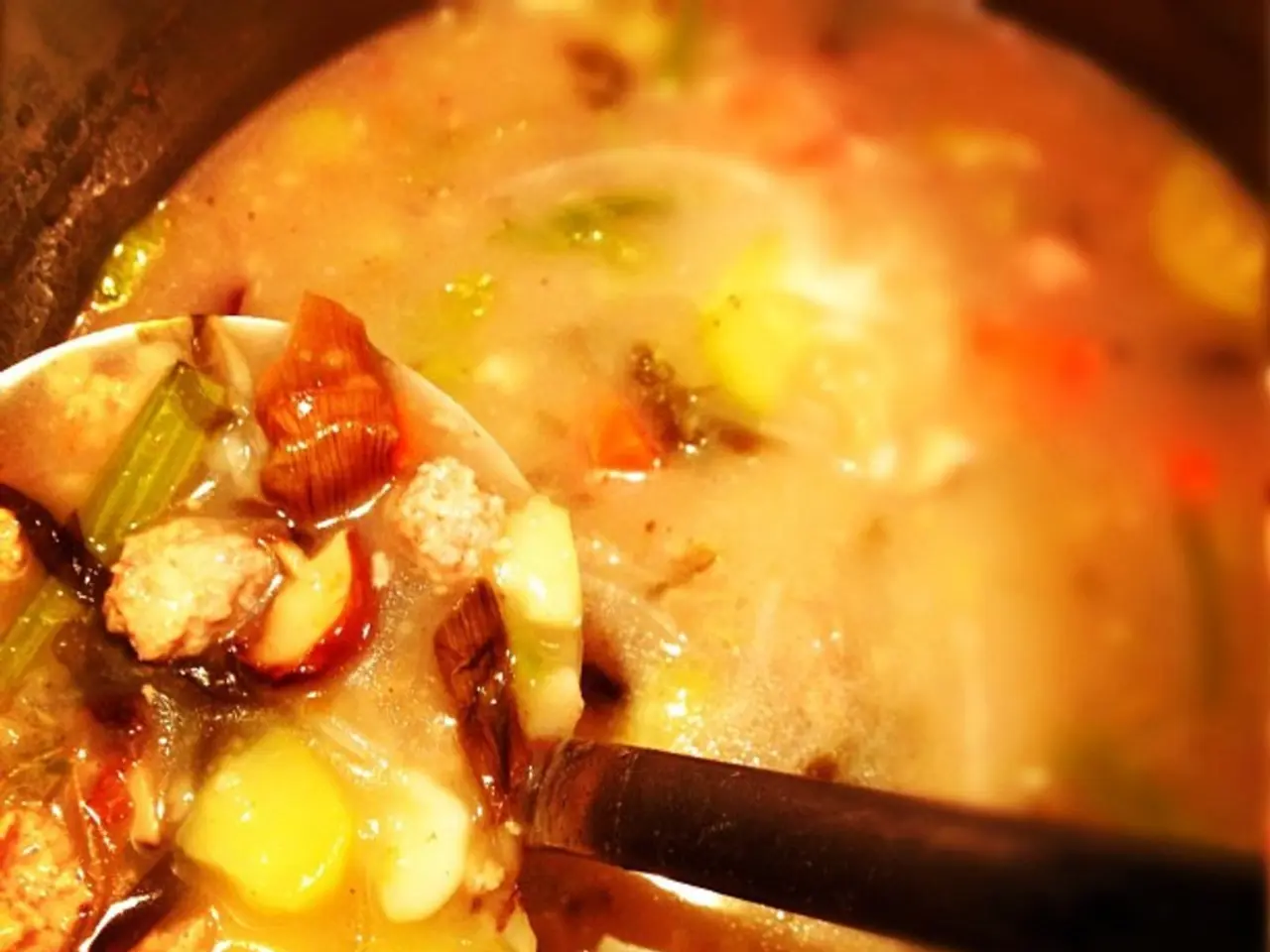Irish Culinary Transformation: Journey from Peasant Meals to Haute Cuisine
In the emerald isle of Ireland, the culinary landscape has undergone a remarkable transformation over the centuries, from simple peasant sustenance to a celebrated and respected culinary identity. This evolution, marked by resourcefulness, adaptation, and cultural significance, has left an indelible impression on the nation's history and identity.
Initially, traditional Irish food was shaped by the humble ingredients that were readily available, such as potatoes, lamb, and pork. Dishes like Irish stew, colcannon, and soda bread were born out of necessity, reflecting the ingenuity of the people making the most of what the land provided [1][2].
The introduction of the potato in the late 16th century revolutionised Irish food history, becoming a staple that supported the majority of the population due to its high yield and adaptability to Ireland’s climate. However, this reliance proved catastrophic during the Great Famine (1845–1852), when potato blight caused mass starvation and emigration. Despite this dark period, the potato endures as a cultural symbol of survival and remains central to many beloved traditional dishes, anchoring Irish cuisine in history and identity [1].
Beyond peasant origins, Irish cuisine gradually integrated Celtic and Christian culinary traditions, which included the use of meat, fish, and dairy products, further enriching the food culture [3]. Over time, these traditional dishes have been preserved, celebrated, and adapted in modern culinary practices.
The Great Famine reshaped the Irish diet, leading to a shift in staple ingredients, disrupted agricultural practices, and a greater emphasis on meat, butter, and bread in Irish cuisine. The tradition of tea drinking and the "full Irish breakfast" evolved during British rule, while dairy, grains, seafood, and seasonal produce continued to be staples [4].
In contemporary Ireland, Irish cuisine has seen a renaissance. Chefs and home cooks honour these traditional dishes while innovating and incorporating global influences and gourmet ingredients. Modern twists on classics like Irish stew and colcannon balance heritage with creativity, making Irish food both relevant and exciting to new generations and international audiences [5].
Ireland's food scene has been transformed by a new generation of artisanal producers who are reviving age-old methods of making bread, cheese, smoked fish, and cured meats. Farm-to-table dining has risen in popularity, showcasing the best of Ireland’s natural larder through seasonal menus that celebrate regional specialities. Ireland's thriving food festivals and markets, such as the Galway International Oyster Festival and Taste of Dublin, showcase modern Irish cuisine, bringing together local farmers, artisans, and chefs [6].
The global slow food movement has had a significant impact on the evolution of Irish cuisine, prioritising locally grown produce, free-range meats, and handmade dairy products. Wild foraging, a practice deeply embedded in Irish history, has also experienced a revival, with chefs incorporating seaweed, wild herbs, and hedgerow berries into contemporary dishes [7].
In summary, Irish cuisine's journey from simple peasant sustenance to a respected culinary identity is marked by a deep connection to the land, survival through hardship, and continuous cultural evolution that honours tradition while embracing modern innovation [1][2][3][5]. Today, Irish cuisine continues to evolve, reflecting the nation's history, cultural influences, and connection to the land.
[1] https://www.ireland.com/en-ie/ireland/culture/food-and-drink/ [2] https://www.irishcentral.com/food-drink/ireland-cuisine [3] https://www.britannica.com/place/Ireland/Food-and-drink [4] https://www.ireland.com/en-ie/ireland/culture/history/the-great-famine [5] https://www.ireland.com/en-ie/ireland/culture/food-and-drink/modern-irish-cuisine [6] https://www.ireland.com/en-ie/ireland/culture/food-and-drink/food-festivals-and-markets [7] https://www.ireland.com/en-ie/ireland/culture/food-and-drink/wild-foods-and-foraging
- The kitchen of Ireland, home to countless celebrated recipes, showcases the country's commitment to sustainability through food and cooking.
- In contemporary culinary lifestyle, ethical cooking practices often incorporate ingredients from local food-and-drink markets, reflecting the cultural travel and education-and-self-development of the chefs.
- Preserving cultural identity through food has led to a revival of age-old cooking methods, such as making bread, cheese, and curing meats, aligning with the slow food movement.
- As a testament to Ireland's resourcefulness, traditional recipes have endured and been reinterpreted with modern ingredients, bridging the gap between heritage and innovation in the food-and-drink industry.
- Farm-to-table dining experiences, popular in Ireland, celebrate the diversity of ingredients, from seasonal produce to smoked fish, emphasizing the nation's commitment to food-and-drink sustainability.
- Recipes incorporating wild foods like seaweed, wild herbs, and hedgerow berries have gained attention in Ireland, demonstrating the country's longstanding connection with the land and commitment to preserving the environment.
- Ireland's thriving food culture, once shaped by necessity, has evolved into a celebrated and respected culinary identity, contributing to the nation's food-and-drink reputation on the global stage.






